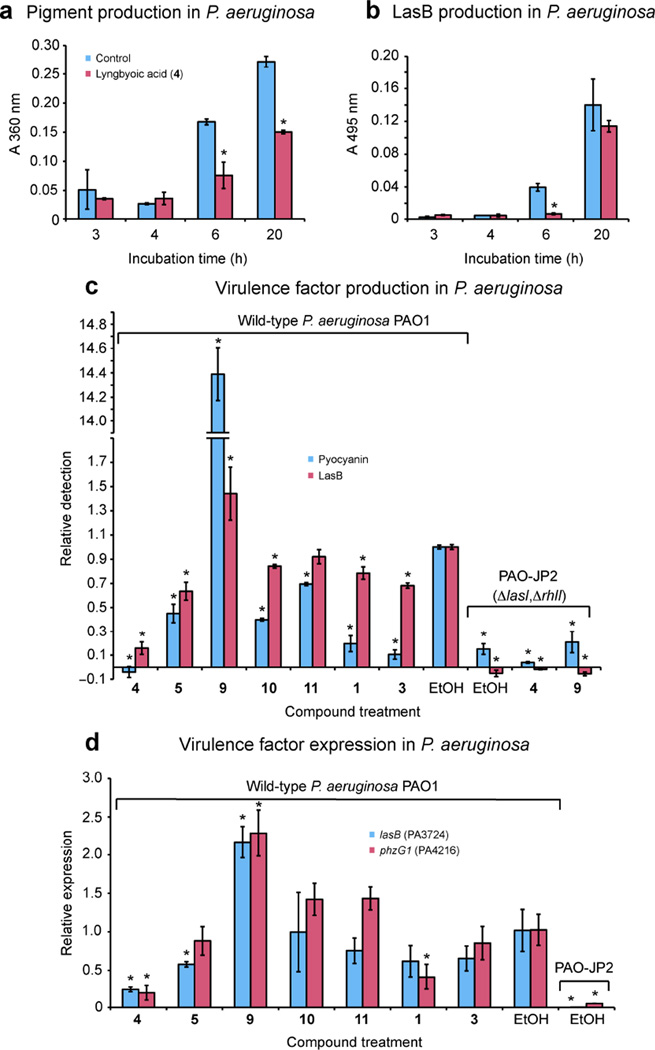Figure 6.
Effect of lyngbyoic acid (4) and other compounds on wild-type P. aeruginosa and the ΔlasIΔrhlI mutant PAO-JP2. In all graphs (*) indicates downregulation with statistical significance of P < 0.05 (t-test) compared to untreated controls. a) Lyngbyoic acid (4) is able to reduce pigment production by PAO1. Cultures (500 µL containing 1 mM 4) were incubated at 37 °C with shaking for the appropriate time before they were spun down and the absorbance of the supernatant at 360 nm was measured. b) Lyngbyoic acid (4) is able to reduce LasB production in PAO1. A portion of supernatants (50 µL) was incubated for 5 h at 37 °C with shaking in the presence of elastin Congo red (200 µL of a 12.5 mg/mL suspension in 30 mM Tris-HCl, pH 7.2), then spun down and the absorbance at 495 nm was measured. c) Effect of lyngbyoic acid (4) and other compounds (1 mM) on pyocyanin and LasB production in PAO1 and PAO-JP2. Cultures (1 mL) were grown in the presence of test compounds or EtOH for 6 h at 37 °C with shaking, before being spun down. A portion (100 µL) of each supernatant was added to 900 µL 5 mg/mL elastin Congo red and incubated at 37 °C with shaking for 18 h, then the mixtures were spun down and the absorbance of the supernatant was measured at 495 nm to measure LasB activity. Another portion (500 µL) of culture supernatants was extracted with 500 µL CHCl3 and then back-extracted with 0.2 N HCl. The absorbance of this acidic aqueous layer was measured at 385 nm to quantify pyocyanin production. d) Effect of lyngbyoic acid (4) and other compounds on the gene expression of lasB and phzG1 as assessed by RT-qPCR. Cultures were grown under the same conditions as in c).

